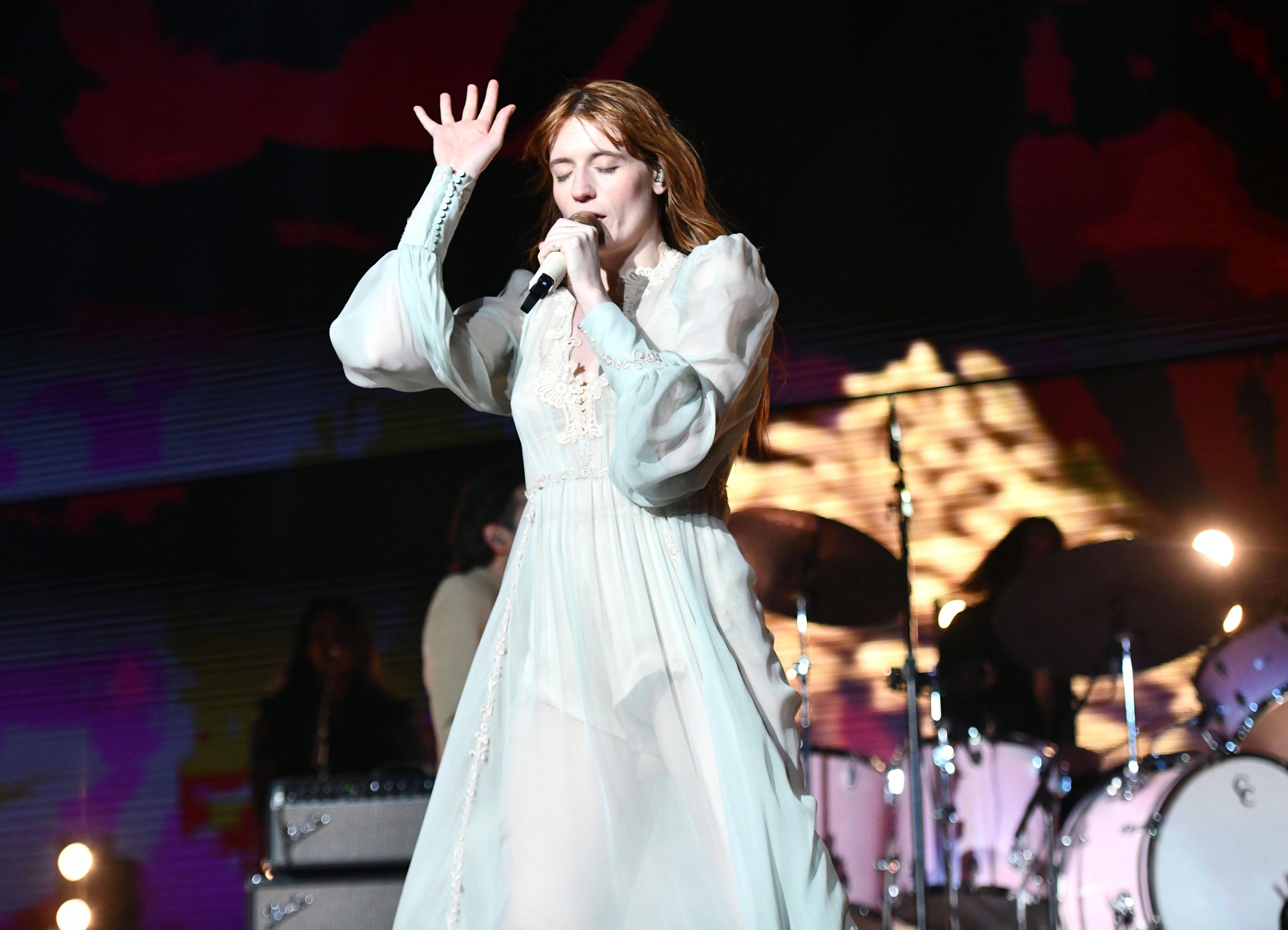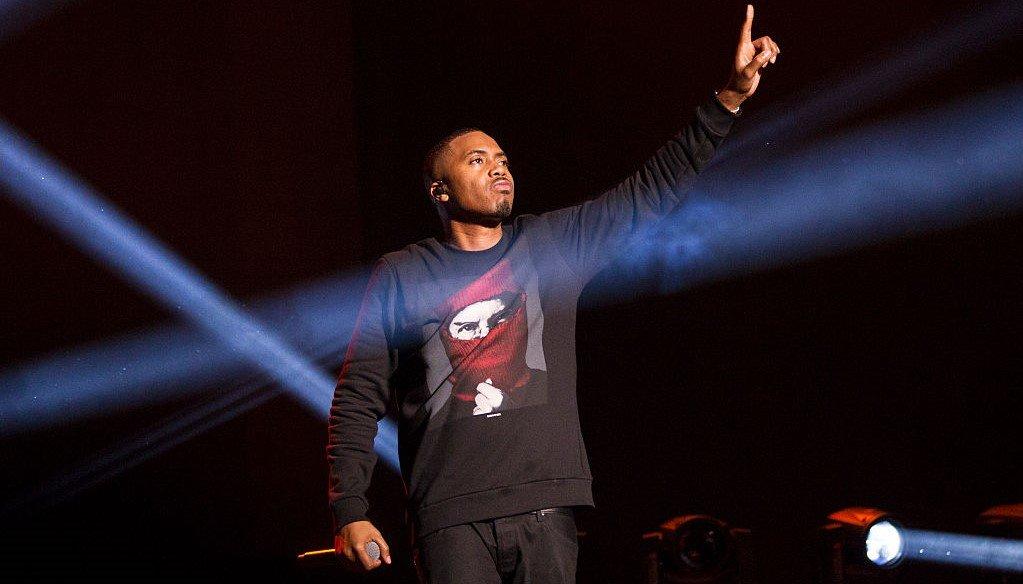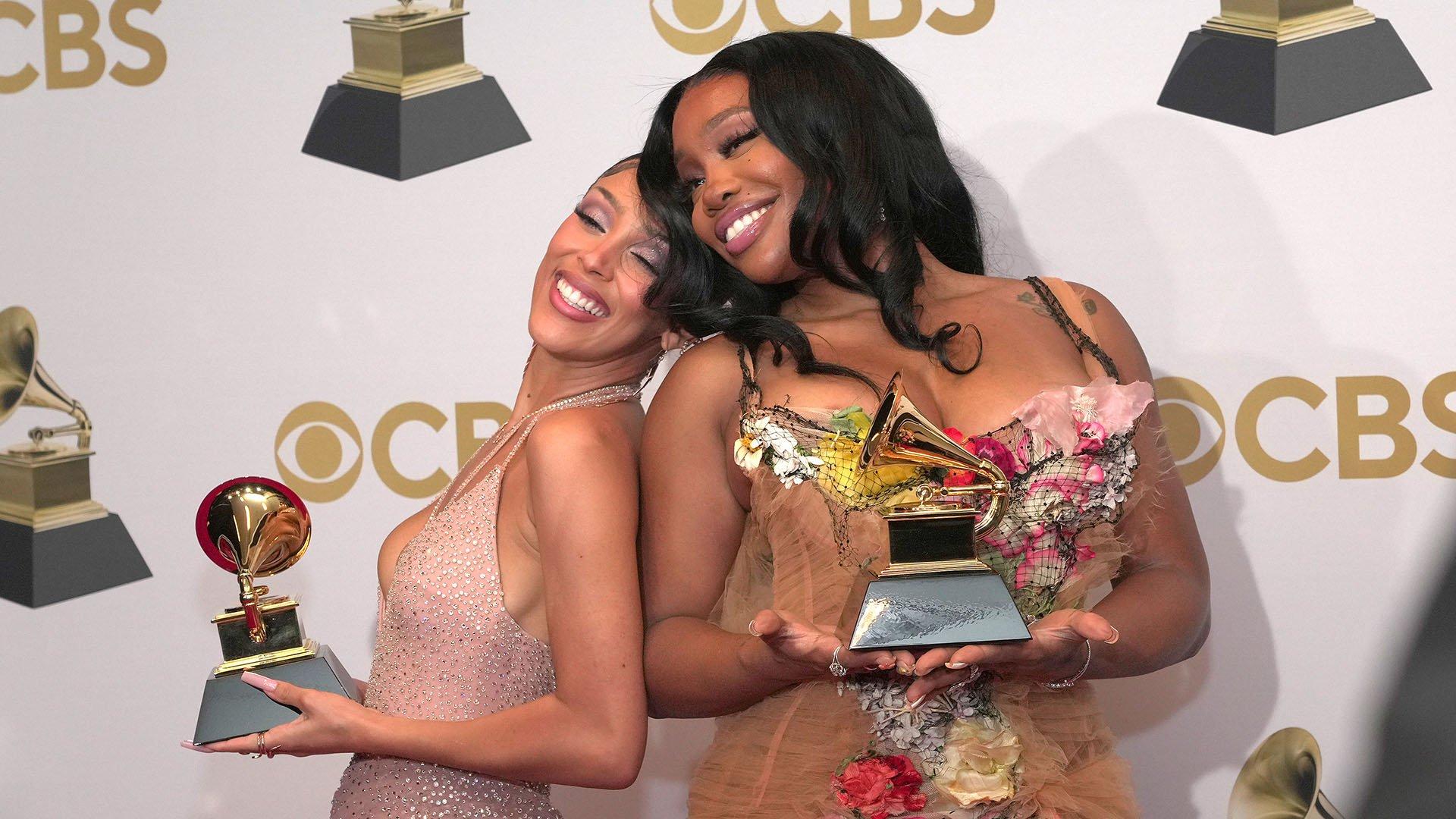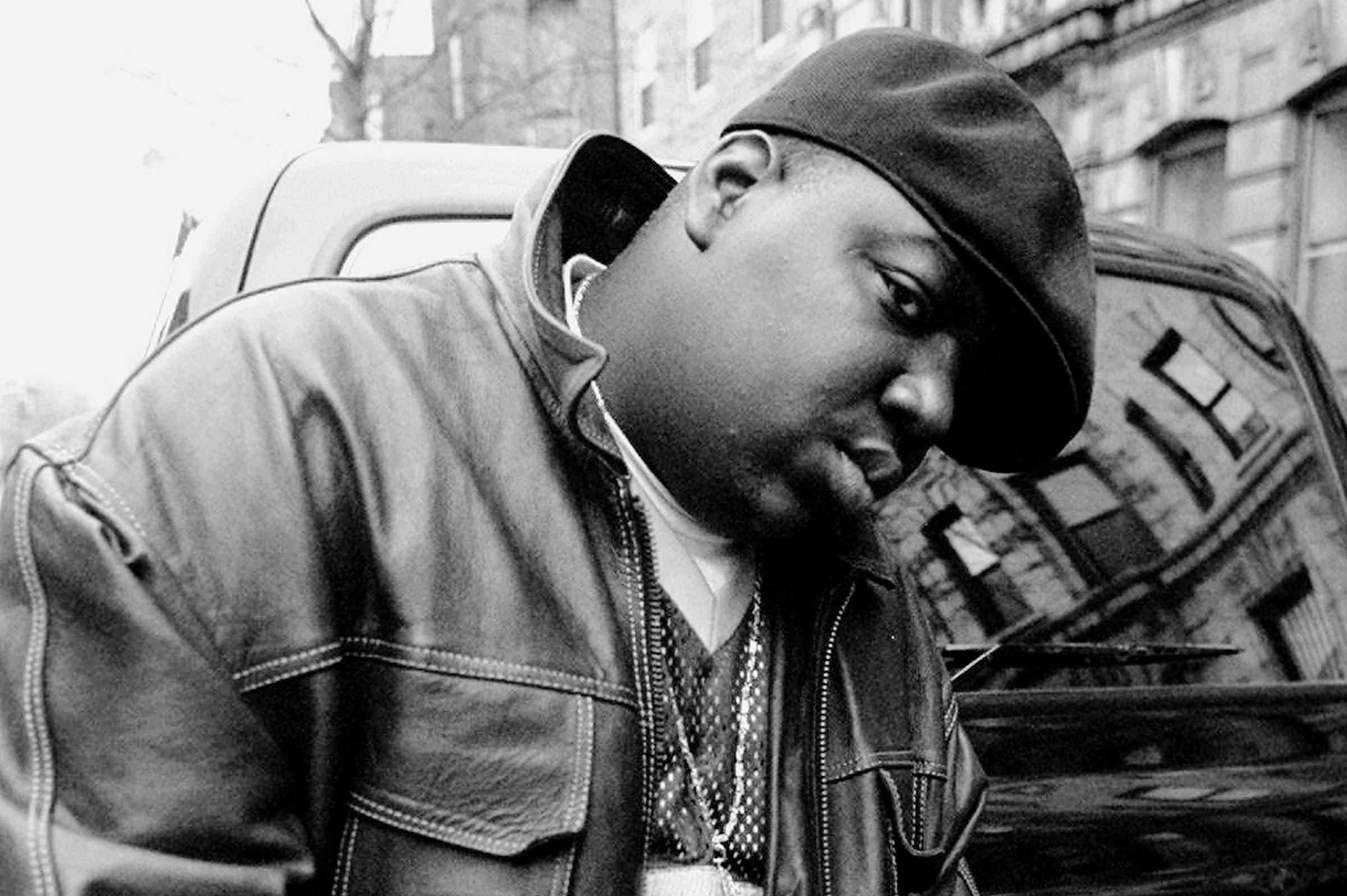Photo: Scott Dudelson/WireImage/Getty Images

Florence & The Machine
news
Governors Ball 2019: The Strokes, Tyler, The Creator And Florence & The Machine To Headline
The NYC music festival returns on May 31–June 2 with plenty of music to rock the island; the impressive lineup also includes Nas, Lil Wayne, Kaytranada, Noname, Charli XCX, Gesaffelstein and BROCKHAMPTON
Today the Governors Ball Music Festival announced the lineup for their ninth year on Randall's Island Park in New York City. Running from May 31–June 2, Governors Ball 2019 will welcome headliners The Strokes and past GRAMMY nominees Tyler, the Creator and Florence & the Machine.
<blockquote class="twitter-tweet" data-lang="en"><p lang="und" dir="ltr"><a href="https://t.co/saGWGEoUSG">pic.twitter.com/saGWGEoUSG</a></p>— The Governors Ball (@GovBallNYC) <a href="https://twitter.com/GovBallNYC/status/1082260809747755011?ref_src=twsrc%5Etfw">January 7, 2019</a></blockquote>
<script async src="https://platform.twitter.com/widgets.js" charset="utf-8"></script>
The three-day event of music, art, food and fun—"A Festival with a New York Heart," according to The New York Times—certainly brings an N.Y.C.-inspired melting pot approach to their musical lineup, and this year does not disappoint. Musical highlights also include: GRAMMY winners Lil Wayne and Kacey Musgraves, GRAMMY nominees SZA, Nas, The Internet, Jorja Smith, Bob Moses, Charli XCX, ZHU, plus Vince Staples, BROCKHAMPTON, Blood Orange, Clairo, Bazzi, MØ, Major Lazer (DJs Jillionaire, Walshy Fire and GRAMMY winner Diplo), Noname, Kaytranada, Gesaffelstein and King Princess.
Discounted "Announce Day" pricing for festival tickets is available today until 11:59 EST. More info on tickets, as well as the complete lineup and event details can be found on the Governors Ball site.
How Collaboration And A Little Magic Made Blood Orange's 'Negro Swan'

Photo: Kimberly White/Getty Images for Hennessy
feature
How 'Illmatic' Defined East Coast Rap: Nas’ Landmark Debut Turns 30
Three decades after Nas released his debut album, 'Illmatic' remains the holy grail of East Coast rap. From poetic, pulled-from-life lyrics to its all-star cast of producers, learn how 'Illmatic' reignited New York’s rap supremacy in the mid-1990s.
After shaking up the rap game with a breakout verse on the Main Source’s "Live at the Barbeque," a 17-year-old, chip-toothed MC named Nasir "Nas" Jones was crowned a prophet. His silk-smooth delivery and poetic rhymes on the 1991 jam were reminiscent of hip-hop greats like Kool G Rap and Rakim.
The verse — which included the line "Verbal assassin, my architect pleases. When I was 12, I went to hell for snuffin’ Jesus" — bestowed heavy expectations on the Queens native. While Nas was discovered by Main Source’s Large Professor, the young MC was soon drawing the attention of music label heads who wanted to ink a deal with the emerging artist.
"I must have rewinded that [verse] like a hundred times," former 3rd Bass rhymer MC Search said in the 2014 documentary Nas: Time Is Illmatic. "This Main Source album is brilliant, but who’s that kid? It almost felt like within a week, everybody wanted to know who that guy was."
Through Nas’ connection with Search, he found a home at Sony Music’s Columbia, and notched another memorable verse on 1992’s "Back To The Grill." But on April 19, 1994, Nas delivered the greatest debut in rap history: Illmatic.
Thirty years later,. Nas’ masterful stroke of poeticism and the gritty boom-bap loops on songs "It Ain’t Hard to Tell," "The World Is Yours," and "N.Y. State of Mind" still resonate. The album also revived the fleeting dominance of NY rap, and unexpectedly inspired other rappers to release albums with their baby pictures on the cover. Its influential power, and the amalgam of musical forces that threaded the album together, made Illmatic one of the definitive East Coast rap albums of the golden age. Few hip-hop albums have been as widely heralded for as long as Illmatic.
The landmark project chronicled Nas’ life growing up in the Queensbridge housing projects while helping restore the influence of East Coast rap on a now bicoastal scene. By '94, the West coast was taking the reins for the first time in the genre’s history. In Southern California, Dr. Dre’s The Chronic and Snoop Dogg’s Doggystyle popularized G-funk, which soon permeated the airwaves and topped the Billboard charts. Alternative West Coast acts like Oakland's Souls of Mischief and South Central's the Pharcyde were also establishing firm ground.
The mecca of hip-hop was no longer atop the leaderboard, but with his first full-length release, Nas was inspired to reclaim New York’s dominance and rekindle Queenbridge’s spark from the late 1980s. "I had to represent," Nas said in a 2019 interview with Drink Champs. "The pressure was on the borough and my project. And just getting into the game, you had to have something to say, so I definitely had to push the pen hard because, if not, it would’ve never [flown]."
Queensbrige is home to the largest housing project in the U.S., and birthed pioneers like MC Shan, Marley Marl, and the fearsome Juice Crew. They fell to South Bronx’s KRS-One and the Boogie Down Productions collective in the infamous "Bridge Wars," which left the Long Island City section seeking a new heir. And Nas, inspired by the lyrical warfare, took up the mantle.
Nas and Large Professor hired legendary producers DJ Premier, Pete Rock, Q-Tip, L.E.S, and others to work on Illmatic. They set the sonic lines, and Nas filled the gaps in spoken word form.
Read more: A Guide To New York Hip-Hop: Unpacking The Sound Of Rap's Birthplace From The Bronx To Staten Island
From their first studio session together, Q-Tip knew Nas’ skills were unlike any other he’d seen before. "You automatically knew," the A Tribe Called Quest legend (and fellow son of Queens) said in an interview with Red Bull Music Academy. "When Large Professor first played him for me, I heard him on the Live at the Barbeque,’ but then Large [Professor] played me his s— and I was like, ‘This dude is crazy, you know what I’m saying?’ I knew it was going to be the impact it was."
The project was a storybook of lived experiences, even down to the iconic album cover. Nas peeled back the layers of street violence, mass incarceration, and generations of disenfranchisement throughout the 10-track LP. "Memory Lane (Sitin’ in da Park)" and "One Time 4 Your Mind" transported listeners to the hardened corners of Queens, where the air was filled with marijuana smoke and the distant whispers from street hustlers.
On the Tri-State anthem "N.Y. State of Mind," Nas’ creative equilibrium was at full balance. In Time Is Illmatic, Nas said the song’s early placement on the LP was intentional. He knew it would "bring [listeners] to hell and back."
"One Love" captured the pain of incarceration, with Nas’ descriptive story of distrust and heartbreak overlaying a chillingly euphoric beat. The AZ-assisted "Life’s a Bitch" is a celebratory toast to survival, and "It Ain’t Hard to Tell" is a masterful showcase of braggadocious rap.
The topics that I talk about were topics that were around before ‘Illmatic’; streets, social economic status, people’s struggles," Nas told Clash magazine. "I just told it crazy real, and it just talks about how to live in the circumstances and goes beyond, dreaming at the same time. Never just stay in the situation that you’re in."
The album was showered with praise upon release, with the Source blessing the album with a highly-coveted five-mic review. The rare score was administered by former Hot 97 radio personality and then-Source intern Minya Oh, who declared it one of the best albums she had ever heard. "Lyrically, the whole s— is on point. No cliched metaphors, no gimmicks. Never too abstract, never superficial."
The rave responses didn’t initially translate to album sales. Ilmatic debuted at No. 12 on the Billboard 200, only selling around 60,000 copies in its first week. The low sales were attributed to pre-Internet leaks, with renderings of Illmatic in circulation up to a year before its official release date, according to Clash. The standout singles also failed to scratch the charts.
Illmatic eventually sold more than two million copies, but the underwhelming start surprised DJ Premier. "We knew it was going to be that big of a deal, that’s why I never understood why it didn’t go like super platinum quick," Premier said to Mass Appeal. "I thought it was going to be super fast and it didn’t. I thought this one was going to be a big platinum album."
But three decades after its release, Illmatic influenced several generations of rap stars and retained its status as one of the best albums in rap history. In 2020, Rolling Stone ranked the album no. 44 on its list of the 500 greatest albums of all time.
Large Professor, who continued to work with Nas on later albums, said Illmatic is a pillar of hip-hop history. "It’s one of the roots of the tree of hip-hop because a lot of styles came from that. A lot of rhyme styles. He got people thinking outside of the norm," the producer said to HipHopDX in 2014. The stuff that he was rhyming was just crazy, man. But, it’s definitely one of the roots that hold the tree of hip-hop up strong."
Nas’ contributions has placed him among the best MCs of all time, and justifiably so. He’s continued to deliver No. 1 albums and hit singles throughout the decades, and scored his first GRAMMY Award for Best Rap Album in 2021 after more than a dozen nominations.
While Nas no longer listens to Illmatic and avoids celebrating the project, telling Haute Living that it’s "corny" to continue championing one album when he’s done so many others. But fans’ continued admiration for the album proves that his early goals were met. The reputation of East Coast rap and Queensbridge was restored, and Nas’ legacy will forever be immortalized. Mission accomplished, Esco.
'Run-DMC' At 40: The Debut Album That Paved The Way For Hip-Hop's Future

Photo: Kevin Mazur/Getty Images for The Recording Academy
video
GRAMMY Rewind: Watch Doja Cat & SZA Tearfully Accept Their First GRAMMYs For "Kiss Me More"
Relive the moment the pair's hit "Kiss Me More" took home Best Pop Duo/Group Performance, which marked the first GRAMMY win of their careers.
As Doja Cat put it herself, the 2022 GRAMMYs were a "big deal" for her and SZA.
Doja Cat walked in with eight nominations, while SZA entered the ceremony with five. Three of those respective nods were for their 2021 smash "Kiss Me More," which ultimately helped the superstars win their first GRAMMYs.
In this episode of GRAMMY Rewind, revisit the night SZA and Doja Cat accepted the golden gramophone for Best Pop Duo/Group Performance — a milestone moment that Doja Cat almost missed.
"Listen. I have never taken such a fast piss in my whole life," Doja Cat quipped after beelining to the stage. "Thank you to everybody — my family, my team. I wouldn't be here without you, and I wouldn't be here without my fans."
Before passing the mic to SZA, Doja also gave a message of appreciation to the "Kill Bill" singer: "You are everything to me. You are incredible. You are the epitome of talent. You're a lyricist. You're everything."
SZA began listing her praises for her mother, God, her supporters, and, of course, Doja Cat. "I love you! Thank you, Doja. I'm glad you made it back in time!" she teased.
"I like to downplay a lot of s— but this is a big deal," Doja tearfully concluded. "Thank you, everybody."
Press play on the video above to hear Doja Cat and SZA's complete acceptance speech for Best Pop Duo/Group Performance at the 2022 GRAMMY Awards, and check back to GRAMMY.com for more new episodes of GRAMMY Rewind.
How 'SOS' Transformed SZA Into A Superstar & Solidified Her As The Vulnerability Queen

Photo: Clarence Davis/NY Daily News Archive via Getty Images
feature
How 1994 Changed The Game For Hip-Hop
With debuts from major artists including Biggie and Outkast, to the apex of boom bap, the dominance of multi-producer albums, and the arrival of the South as an epicenter of hip-hop, 1994 was one of the most important years in the culture's history.
While significant attention was devoted to the celebration of hip-hop in 2023 — an acknowledgement of what is widely acknowledged as its 50th anniversary — another important anniversary in hip-hop is happening this year as well. Specifically, it’s been 30 years since 1994, when a new generation entered the music industry and set the genre on a course that in many ways continues until today.
There are many ways to look at 1994: lists of great albums (here’s a top 50 to get you started); a look back at what fans and tastemakers were actually listening to at the time; the best overlooked obscurities. But the best way to really understand why a single 365 three decades ago had such an impact is to narrow our focus to look at the important debut albums released that year.
An artist’s or group’s debut is their entry into the wider musical conversation, their first full statement about who they are and where in the landscape they see themselves. The debuts released in 1994 — which include the Notorious B.I.G.'s Ready to Die, Nas' Illmatic and Southernplayalisticadillacmuzik from Outkast — were notable not only in their own right, but because of the insight they give us into wider trends in rap.
Read on for some of the ways that 1994's debut records demonstrated what was happening in rap at the time, and showed us the way forward.
Hip-Hop Became More Than Just An East & West Coast Thing
The debut albums that moved rap music in 1994 were geographically varied, which was important for a music scene that was still, from a national perspective, largely tied to the media centers at the coasts. Yes, there were New York artists (Biggie and Nas most notably, as well as O.C., Jeru the Damaja, the Beatnuts, and Keith Murray). The West Coast G-funk domination, which began in late 1992 with Dr. Dre’s The Chronic, continued with Dre’s step brother Warren G.
But the huge number of important debuts from other places around the country in 1994 showed that rap music had developed mature scenes in multiple cities — scenes that fans from around the country were starting to pay significant attention to.
To begin with, there was Houston. The Geto Boys were arguably the first artists from the city to gain national attention (and controversy) several years prior. By 1994, the city’s scene had expanded enough to allow a variety of notable debuts, of wildly different styles, to make their way into the marketplace.
Read more: A Guide To Texas Hip-Hop: Definitive Releases, Artists & Events
The Rap-A-Lot label that first brought the Geto Boys to the world’s attention branched out with Big Mike’s Somethin’ Serious and the Odd Squad’s Fadanuf Fa Erybody!! Both had bluesy, soulful sounds that were quickly becoming the label’s trademark — in no small part due to their main producers, N.O. Joe and Mike Dean. In addition, an entirely separate style centered around the slowed-down mixes of DJ Screw began to expand outside of the South Side with the debut release by Screwed Up Click member E.S.G.
There were also notable debut albums by artists and groups from Cleveland (Bone Thugs-N-Harmony, Creepin on ah Come Up), Oakland (Saafir and Casual), and of course Atlanta — more about that last one later.
1994 Saw The Pinnacle Of Boom-Bap
Popularized by KRS-One’s 1993 album Return of the Boom Bap, the term "boom bap" started as an onomatopoeic way of referring to the sound of a standard rap drum pattern — the "boom" of a kick drum on the downbeat, followed by the "bap" of a snare on the backbeat.
The style that would grow to be associated with that name (though it was not much-used at the time) was at its apex in 1994. A handful of primarily East Coast producers and groups were beginning a new sonic conversation, using innovations like filtered bass lines while competing to see who could flip the now standard sample sources in ever-more creative ways.
Most of the producers at the height of this style — DJ Premier, Buckwild, RZA, Large Professor, Pete Rock and the Beatnuts, to name a few — worked on notable debuts that year. Premier produced all of Jeru the Damaja’s The Sun Rises in the East. Buckwild helmed nearly the entirety of O.C.’s debut Word…Life. RZA was responsible for Method Man’s Tical. The Beatnuts took care of their own full-length Street Level. Easy Mo Bee and Premier both played a part in Biggie’s Ready to Die. And then there was Illmatic, which featured a veritable who’s who of production elites: Premier, L.E.S., Large Professor, Pete Rock, and Q-Tip.
The work the producers did on these records was some of the best of their respective careers. Even now, putting on tracks like O.C.’s "Time’s Up" (Buckwild), Jeru’s "Come Clean" (Premier), Meth’s "Bring the Pain" (RZA), Biggie’s "The What" (Easy Mo Bee), or Nas’ "The World Is Yours" (Pete Rock) will get heads nodding.
Major Releases Balanced Street Sounds & Commercial Appeal
"Rap is not pop/If you call it that, then stop," spit Q-Tip on 1991’s "Check the Rhime." Two years later, De La Soul were adamant that "It might blow up, but it won’t go pop." In 1994, the division between rap and pop — under attack at least since Biz Markie made something for the radio back in the ‘80s — began to collapse entirely thanks to the team of the Notorious B.I.G. and his label head and producer Sean "Puffy" Combs.
Biggie was the hardcore rhymer who wanted to impress his peers while spitting about "Party & Bulls—." Puff was the businessman who wanted his artist to sell millions and be on the radio. The result of their yin-and-yang was Ready to Die, an album that perfectly balanced these ambitions.
This template — hardcore songs like "Machine Gun Funk" for the die-hards, sing-a-longs like "Juicy" for the newly curious — is one that Big’s good friend Jay-Z would employ while climbing to his current iconic status.
Solo Stars Broke Out Of Crews
One major thing that happened in 1994 is that new artists were created not out of whole cloth, but out of existing rap crews. Warren G exploded into stardom with his debut Regulate… G Funk Era. He came out of the Death Row Records axis — he was Dre’s stepbrother, and had been in a group with a pre-fame Snoop Dogg. Across the country, Method Man sprang out of the Wu-Tang collective and within a year had his own hit single with "I’ll Be There For You/You’re All I Need To Get By."
Anyone who listened to the Odd Squad’s album could tell that there was a group member bound for solo success: Devin the Dude. Keith Murray popped out of the Def Squad. Casual came out of the Bay Area’s Hieroglyphics.
Read more: A Guide To Bay Area Hip-Hop: Definitive Releases, Artists & Subgenres From Northern California
This would be the model for years to come: Create a group of artists and attempt, one by one, to break them out as stars. You could see it in Roc-a-fella, Ruff Ryders, and countless other crews towards the end of the ‘90s and the beginning of the new millennium.
Multi-Producer Albums Began To Dominate
Illmatic was not the first rap album to feature multiple prominent producers. However, it quickly became the most influential. The album’s near-universal critical acclaim — it earned a perfect five-mic score in The Source — meant that its strategy of gathering all of the top production talent together for one album would quickly become the standard.
Within less than a decade, the production credits on major rap albums would begin to look nearly identical: names like the Neptunes, Timbaland, Premier, Kanye West, and the Trackmasters would pop up on album after album. By the time Jay-Z said he’d get you "bling like the Neptunes sound," it became de rigueur to have a Neptunes beat on your album, and to fill out the rest of the tracklist with other big names (and perhaps a few lesser-known ones to save money).
The South Got Something To Say
If there’s one city that can safely be said to be the center of rap music for the past decade or so, it’s Atlanta. While the ATL has had rappers of note since Shy-D and Raheem the Dream, it was a group that debuted in 1994 that really set the stage for the city’s takeover.
Outkast’s Southernplayalisticadillacmuzik was the work of two young, ambitious teenagers, along with the production collective Organized Noize. The group’s first video was directed by none other than Puffy. Biggie fell so in love with the city that he toyed with moving there.
Outkast's debut album won Best New Artist and Best New Rap of the Year at the 1995 Source Awards, though the duo of André 3000 and Big Boi walked on stage to accept their award to a chorus of boos. The disrespect only pushed André to affirm the South's place on the rap map, famously telling the audience, "The South got something to say."
Read more: A Guide To Southern Hip-Hop: Definitive Releases, Artists & Subgenres From The Dirty South
Outkast’s success meant that they kept on making innovative albums for several more years, as did other members of their Dungeon Family crew. This brought energy and attention to the city, as did the success of Jermain Dupri’s So So Def label. Then came the "snap" movement of the 2000s, and of course trap music, which had its roots in aughts-era Atlanta artists like T.I. and producers like Shawty Redd and DJ Toomp.
But in the 2010s a new artist would make Atlanta explode, and he traced his lineage straight back to the Dungeon. Future is the first cousin of Organized Noize member Rico Wade, and was part of the so-called "second generation" of the Dungeon Family back when he went by "Meathead." His world-beating success over the past decade-plus has been a cornerstone in Atlanta’s rise to the top of the rap world. Young Thug, who has cited Future as an influence, has sparked a veritable ecosystem of sound-alikes and proteges, some of whom have themselves gone on to be major artists.
Atlanta’s reign at the top of the rap world, some theorize, may finally be coming to an end, at least in part because of police pressure. But the city has had a decade-plus run as the de facto capital of rap, and that’s thanks in no small part to Outkast.
Why 1998 Was Hip-Hop's Most Mature Year: From The Rise Of The Underground To Artist Masterworks

Photo: Kelly Christine Sutton
list
Everything We Know About Kacey Musgraves' New Album 'Deeper Well': Release Date, Cover Art & More
On the heels of a history-making GRAMMY win, Kacey Musgraves announced that her fifth studio album is on the way. Take a look at all of the details she's unveiled so far.
A new Kacey Musgraves era is upon us! The country superstar teased the news with a cryptic social media post on Feb. 4: "I'm saying goodbye to the people that I feel are real good at wasting my time," she wrote in the caption. "No regrets, baby, I just think that maybe you go your way and I'll go mine."
That teaser coincided with a historic win at the 2024 GRAMMY Awards. The seven-time GRAMMY winner took home the golden gramophone for Best Country Duo/Group Performance for "I Remember Everything," her 2023 collab with Zach Bryan; with that victory, she became the first artist to win in all four Country Field Categories. (She won Best Country Album and Best Country Song in 2014 and 2019 — for Same Trailer Different Park and "Merry Go Round," and Golden Hour and "Space Cowboy," respectively — and "Space Cowboy" also took home Best Country Solo Performance in 2019.)
Fresh off that achievement, Musgraves announced her forthcoming album, Deeper Well,and shared its folksy, introspective title track. As fans eagerly await its release, GRAMMY.com has rounded up everything to be found about the singer/songwriter's fifth studio set so far.
The Album Drops Sooner Than You Think
We're quickly coming up on three years since Musgraves released her fourth full-length, star-crossed, and suddenly, the release of Deeper Well is just around the corner. Just a few days after her GRAMMYs teaser, the country star revealed that her sixth album will be released in just a matter of weeks.
"My new album, Deeper Well, is arriving March 15th," Musgraves wrote on social media. "It's a collection of songs I hold very dear to my heart. I hope it makes a home in all of your hearts, too."
There Are Two Different Covers
In her social post, Musgraves shared that Deeper Well will have not one, but two different covers — both shot by the singer's younger sister Kelly.
The standard cover features the superstar gazing wistfully into the camera as she cradles a crimson clover in her hand. The limited edition cover is more evocative (and NSFW), with Musgraves laying nude, curled up in a verdant field with her back turned to the camera.
The Lead Single Is Also the Title Track
Ahead of the album's full unveiling, Musgraves dropped "Deeper Well" as its lead single. The gentle, finger-plucked track finds the singer/songwriter outgrowing relationships and choices that no longer serve her, blazing a new trail for herself and finding peace in the process: "I just think that maybe/ It's natural when things lose their shine/ So other things can glow," she sings.
"Sometimes you reach a crossroads. Winds change direction. What you once felt drawn to doesn't hold the same allure," Musgraves dished in a statement about the song's themes. "You get blown off course but eventually find your footing and forage for new inspiration, new insight and deeper love somewhere else."
She's Serving Cottagecore Space Witch In The First Music Video
Along with the song and album announcement, Musgraves shared the "Deeper Well" music video on Thursday — and the cinematic visual is a trip.
Helmed by A-list director Hannah Lux Davis and shot in Iceland, the clip finds the singer holed up in a picturesque cabin and wandering a stunning coastline strewn with giant, levitating boulders.
The costuming, meanwhile, leans more "homestead chic" as Musgraves rocks patchwork pioneer dresses, work bandanas and a cozily oversized shearling coat as she tends to a menagerie of farm animals, hangs laundry, gathers crops and, oh yeah, gets swallowed up by a magical, glowing orb by the video's end.
From the looks of Musgraves' Instagram — and her newly minted profile name, Kacey Mossgraves — it seems the farmcore aesthetic might ring throughout Deeper Well.
The Album Will Showcase The Singer's "Softer Side"
Musgraves teased the creative direction of Deeper Well in a new interview with Zane Lowe on Apple Music 1. "I've found more of a connection to my softer side, my roots, like some of the Americana, the folk, the country, some of the stuff, really the warmth of that. I felt drawn to that.
"I felt like I was in a softer place myself after star-crossed and going through a divorce and doing a lot of therapy and honestly falling in love again and opening myself back up to the human experience," she continued. "These songs just kind of started coming out."
She's Releasing A Coffee Table Book
For another way to experience Musgraves' Deeper Well era, the singer/songwriter whipped up an 84-page 'zine with photos, lyrics, and stories behind the songs. Fans can purchase the soft-cover book — which comes with a CD — on her website, or at Barnes & Noble and indie record stores.
As Musgraves' punny Instagram caption notes, the book is another indication that she's "onto the next chapter (literally)."
The Track List Is Already Here
Musgraves is no stranger to delivering bodies of work upwards of a dozen-plus songs, and it looks like Deeper Well will be no exception. The 14-song track list was unveiled on Instagram, with song titles like "Giver / Taker" and "Jade Green" fitting both the theme of letting go as well as the cottagecore aesthetic seamlessly.
She's Working with Some Familiar Collaborators
According to her announcement, Deeper Well was co-produced by Ian Fitchuk and Daniel Tashian, both of whom worked with Musgraves on 2018's Golden Hour — which won Album Of The Year at the 61st GRAMMY Awards — and 2021's star-crossed. If those albums are any indication, Deeper Well is bound to be another Kacey masterpiece.
Big First Wins At The 2024 GRAMMYs: Karol G, Lainey Wilson, Victoria Monét & More
